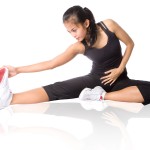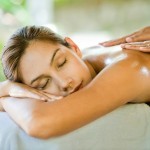At Archview Physiotherapy our chartered physiotherapists are expertly trained in dry needling for the treatment of muscle problems & headaches. Dry needling can be used for the treatment of painful conditions and sports injuries.
What? Dry Needling is an effective deep muscle release therapy which relaxes knots in muscle tissue that can cause muscle pain, dysfunction, weakness and tightness. Dry needling involves gently inserting a sterile single use Acupuncture needle directly into muscle trigger points. Dry needling helps the muscle relax.
Where do you get Trigger Points and Myofascial Pain? Anywhere! Common causes of persistent headache are muscles around the shoulders and neck. Trigger points that build up due to poor posture and long periods of sitting at a desk are a very common cause of shoulder pain. Trigger points and myofascial pain in the spine can cause back pain, while in the buttock it can cause hip and leg pain.
What does it feel like? Generally, the needle insertion is not felt, the local twitch response may provoke a very brief somewhat painful response. The “twitch” resets the muscle and nerve supply, increasing the blood flow to the area which helps to relax the muscle. This is the first step to breaking the pain cycle and releasing tight trigger points.
Side effects/ Effectiveness? After dry needling treatment, the area that is treated will feel much softer and relaxed and the person will feel looser. Post-treatment some discomfort may be felt in the area and referral zone lasting anywhere between 1-48 hours. Once this has subsided there should be an improvement in symptoms. You may be advised to use heat over the sore area and may need to modify exercise for a day afterwards. Multiple sessions may be necessary to resolve the symptoms fully.
What can be treated with Dry Needling?
- Back and neck pain, including postural problems and tension
- Headaches
- Neck
- Shoulder & Arm pain (frozen shoulder, impingements, tennis or golfer’s elbow)
- Carpal Tunnel
- Pelvic girdle pain
- Gluteal & Leg pain (Sciatica)
- Hamstring strains
- Knee & Shin pain
- Calf tightness & Cramps
- Repetitive Strain Injuries
Contraindications? There are very few reasons why a person is not suitable for dry needling, these include obesity and pregnancy. If you are taking anticoagulant medicines (eg. Warfarin) or if you have skin infections near the trigger points, then needling shouldn’t be used.
Additional benefits! Frequently people find it can also result in better energy levels, appetite and sleep, along with an enhanced sense of overall well-being.
Archview Physiotherapy and Massage Therapy Clinic, Dublin 6 and Dublin 14. Experts in the field of Pain and Sports Injury. Locations: Ranelagh and Dundrum, Dublin. Ph: 01 4913228 Email: [email protected]














